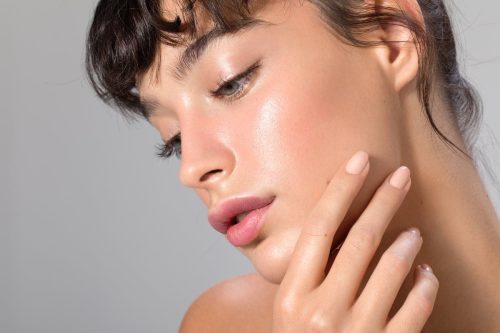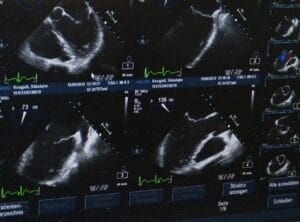Noses come in many sizes and shapes. And all types of noses are as unique as each of us. It is a part of the upper respiratory tract and therefore has essential functions when breathing: It regulates the flow of air, warms the inhaled air, and cleans and humidifies it. It is also important for the sense of smell because most of what we taste is actually smelled. Last but not least, different types of nose shapes play an important role in language formation because they serve as a resonance chamber when speaking.

 4.7
4.7
Would you like to receive information about the operations from Vanity Doctors?
As Vanity, we can give you information about the operation you are considering.
Ask the DoctorNevertheless, there are some generic terms for different nose shapes: Crooked nose, humped nose, hooked nose, saddle nose, broad nose, bulbous nose or snub nose. These not only have an impact on our appearance but often also on the functionality of the nose. The outer shape of the nose is often perceived as disturbing for the overall expression of the face when the nose dominates the face. A pronounced deformity of the kinds of the nose becomes a “negative eye-catcher” on your face that you would like to change.
Here are the most common types of nose shapes for you!
Humped Nose
The best type of nose bridge is usually straight, exceptionally bridges of nose types female can be slightly curved inwards. If the bridge of the nose curves more outwards, it is called a humped nose.
This is most commonly genetic, but can also result from a trauma associated with disproportionate growth. In some cases, you can feel the cartilage or bone fragments under the skin. A small hump of approx. 0.3 mm is tolerable and, due to its frequent occurrence, gives the nose a natural appearance.
Correction of the Humped Nose
The removal of the hump is often associated with the subsequent reconstruction of the bridge of the nose, otherwise, a so-called collapse of the bridge of the nose can occur, with the lateral cartilages migrating backward and forming an image of the inverted letter “V”.
The reconstruction is carried out either with cartilaginous strips (called spreader grafts) which are obtained from the nasal septum, or the lateral cartilage is relocated inwards and a new bridge of the nose is thus created. In some cases, when a nasal bump appears very symmetrical, one performs the dorsal preservation, let down technique. The bridge of the nose is preserved and shifted inwards.
Crooked Nose
If you draw a line between the point in the middle of the eyebrows and the point in the middle of the upper lip, you get what is called the facial axis. If the nose deviates significantly more than 5° from this line, one speaks of one of the nose shape names: a crooked nose.
At the same time, many people have facial asymmetry, so sometimes you surgically put your nose in the middle, but the face appears even more asymmetrical. Therefore, a joint facial analysis is necessary to decide where exactly the nose should be positioned. Sometimes the geometrically perfect position is a disadvantage. A crooked nose is often associated with a deviated septum that partially obstructs one half of the inner nose, causing nasal breathing obstruction.
Correction of the Crooked Nose
A crooked nose is always corrected by correcting the nasal septum, which serves as the pillar of types of human nose. A crooked nose is very often caused by trauma, even in early childhood, and is usually associated with humpy types of noses. In rare cases, patients only have a cartilaginous crooked nose, in which the straightening of the nasal septum plays a decisive role.
When operating on a crooked nose, extreme precision is required when making bony cuts, which is why an ultrasonic knife is used. In some cases, the bone is noticeably thicker on one side; in such patients, bone modeling or rhinosculpting is performed with the same instrument. At the same time, compensatory, cartilaginous transplants are used.
The grafts are most commonly obtained from the nasal septum, but in some cases from the pinna or costal cartilage. These give the nose more volume on one side so that it appears straight.
Broad Nose
One of the different types of noses is the board nose which appears relatively wide in its bony-cartilaginous base, often combined with a broad nasal tip. These almost barrel-shaped noses flare out further at the base than the vertical lines drawn straight down from the inner corners of the eyes. The cause of a wide nose can be genetic or occur as a result of trauma.
Correction of the Broad Nose
Different kinds of noses require unique surgeries. When planning the operation, the surgeon must be aware of the thickness of the nasal bones. In the case of very thick bones, an inward displacement can narrow the airways and thus lead to breathing difficulties. In these cases, a tomography, a computed tomography, is necessary to plan the operation. In most cases, the bone can be modeled in such a way that there are no functional disabilities later.
In addition to narrowing the nose, an operation on the wide nose must also aim to preserve the inner mucous membrane so that a bony collapse does not occur. Therefore, in such cases, an ultrasonic knife is used, which is extremely gentle on the soft tissue.
In these patients, the tip and base of the nose with the nostrils are also very wide. In many cases, the tip of the nose also seems very low, so it is first lengthened with a graft of autologous cartilage. This then works like a tent pole, which gives the tent a shape. With little cartilage removal at the tip of the nose and shaping it with special sutures, you can very often achieve the desired effect.
Saddle Nose
After trauma, nasal septum surgery, or a hole in the nasal septum, the bridge of the nose may drop well below normal, and exhibit a saddle-like appearance, particularly in the middle of the nose. These patients may also have a crooked nose depending on the cause. Patients often complain of obstructed nasal breathing. One often finds a very crooked nasal septum caused by trauma.
Other causes of saddle noses can be previous operations, especially on the nasal septum, and the associated loss of support. Sometimes an infection caused by a bruise in the nasal septum can lead to loss of cartilage and support.
Correction of the Saddle Nose
First, one should perform nasal septum surgery and make the reconstruction necessary in this area. The bridge of the nose is then accessed and the extent of the missing material on the bridge of the nose is defined.
This profile defect must be filled with autologous transplants. The cartilage for this is – if still available – obtained from the nasal septum, otherwise from the auricle or a rib, especially processed and placed in the defect. Small pieces of cartilage are often connected with blood components; this creates a transplant that optimally adapts to the underlying tissue.
Performing this operation is very complex and should be performed by very experienced surgeons.
Bulbous Nose
If a nose has a very wide tip, both nasal cartilages are clearly visible under the skin and have grown disproportionately large, the term bulbous nose is used. In some cases, the patient’s skin thickness is more responsible for this nose shape.
Correction of the Bulbous Nose
The surgeon must carefully weigh up how much cartilage really needs to be removed in order not to weaken the cartilaginous framework too much, and what additional maneuvers coupled with supporting measures are necessary to achieve an aesthetically pleasing nasal tip.
Especially in patients with thin skin, excessive cartilage removal can result in a massive contraction of the nostrils.
Tension Nose
If the nasal septum has grown too much and the entire nasal pyramid has become too large as a result, this is referred to as a tension nose. On the outside, it is often very narrow and long, and at the same time, the angle between the lateral cartilage and the nasal septum is very small, resulting in obstructed nasal breathing.
Correction of the Tension Nose
The surgical goal is to improve breathing while shortening the external nose; this operation is often associated with a very good result. In the event that the bridge of the nose shows a symmetrical shape from the front, a nasal bridge preservation operation/letdown is very often the method of choice in practice.
Whether you have the perfect snub nose or not, in the end it all comes down to one decisive factor: that you are happy with your nose. This relates to both the function and the shape of your nose.
If you are suffering physically or psychologically from the shape of your nose, or if you only want small improvements, there are now a wide range of treatment options. The measures range from surgical nose corrections to non-surgical nose corrections. You can contact our experts and get clear answers to your questions about rhinoplasty now.
Which type of nose is most attractive?
Beauty is subjective and it is very difficult to decide which nose is more attractive. Although each nose is beautiful in its own way, most people believe that the Greek nose is the most beautiful nose type. It resembles Greek sculptures that are not only extremely well constructed but also exude a sense of perfection and proportion.
But while most people want to have a Greek nose, others dream of having a heavenly nose. The celestial nose reminds people of Kerubim angels from its small size and pit of the bridge of the nose. As a result, it can give any face a divine feel, making this nose type a choice for many people who have had plastic surgery.
How many types of noses are there?
The outer shape of the nose shows many variations, and around 250 different nose types are known to date.
What type of nose is rare?
When it comes to the rarest nose, there aren’t many notable personalities with interesting nose types. In fact, it is estimated that less than 1% of the world’s population has a Pinocchio nose. However, there is another type of nose that can take the title of the rarest and its name is Anonymous nose. So what makes it so special? Simply put, this flat, round shape was found in only one face of the 1793 studied, meaning less than 0.05% of the population has it. Still, due to its low numbers, it’s difficult to pinpoint exactly how many people worldwide have this type of nose.
What kind of nose is perfect?
Now that some nose shapes have been presented, we ask ourselves whether there is a “correct” nose shape. In fact, there are studies that suggest the perfect nose has a subtle snub shape and a 106-degree angle (measured from lip to bridge of the nose), which Dr. Fasching , however: “For me, there is no such thing as a nose shape that fits everyone. Just as a person’s personality is individual, so is their face. More important than a snub nose or any other desired nose shape is that the nose fits harmoniously into the face and thus suits the wearer. It is important that the nose can perform its functions without restriction.”
What does a Greek nose look like?
The Greek nose has small nostrils, making it a must-have for celebrities and models. In fact, this type of nose gives a stylish and unique look to those who have it. But for a better idea, you can take a look at the Duchess of Cambridge, Kate Middleton, and Hollywood actress Jennifer Aniston, as they are the most important people with a Greek nose.
The page content is for informational purposes only. The content of this page does not include items containing information on therapeutic health care. For diagnosis and treatment, you must consult your physician or consult the physicians in our clinic. The content has been written regarding the following sources by Vanity Estetik doctors.






